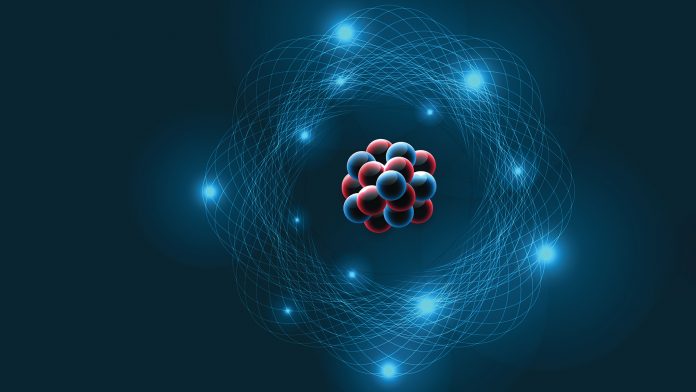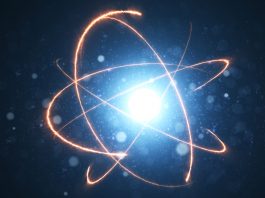An international research team with participation from Mainz and Darmstadt measures neutron form factors to examine the structure of the neutron with previously unattained precision.
Atomic nuclei, and consequently almost all visible matter, consists of protons and neutrons. However, many of the properties found in these omnipresent natural building blocks remain undetermined. Ninety years after its discovery, as an uncharged particle, the neutron still resists many types of measurement, thus many unanswered questions regarding its size and lifetime, among other things, remain. The neutron consists of three quarks which whirl around inside it, held together by gluons. Physicists use electromagnetic form factors to explain this dynamic inner structure of the neutron. These form factors represent an average distribution of electric charge and magnetisation within the neutron and can be defined through means of experimentation.
Form factor map filled with precise data
“A single form factor, measured at a certain energy level, does not say much at first,” explained Professor Frank Maas, a researcher at the PRISMA+ Cluster of Excellence in Mainz, the Helmholtz Institute Mainz (HIM), and GSI Helmholtzzentrum für Schwerionenforschung Darmstadt. “Measurements of the form factors at various energies are needed in order to draw conclusions on the structure of the neutron.”
In specific energy ranges, which are accessible using standard electron-proton scattering experiments, form factors can be defined fairly accurately. Nevertheless, this has not yet been the case with other ranges for which necessitates annihilation techniques involving matter and antimatter mutually destroying each other.
The BESIII Experiment being undertaken in China, has recently proved it is possible to precisely determine the corresponding data in the energy range of 2 to 3.8 gigaelectronvolts.
“With this new data, we have, so to speak, filled a blank space on the neutron form factor ‘map’, which until now was unknown territory,” Professor Frank Maas explained. “This data is now as precise as that obtained in corresponding scattering experiments. As a result, our knowledge of the form factors of the neutron will change dramatically and as such we will get a far more comprehensive picture of this important building block of nature.”
Pioneering work in neutron field of research
To make advances into completing the required fields of the form factor ‘map’, the physicists needed antiparticles. The international partnership therefore used the Beijing Electron-Positron Collider II for its measurements. Here, electrons and their positive antiparticles, i.e., positrons, are permitted to collide in an accelerator, thus destroying each other and creating other new particle pairs – a process known as ‘annihilation’ in physics. Using the BESIII detector, the researchers observed and analysed the outcome, in which the electrons and positrons form neutrons and anti-neutrons. “Annihilation experiments like these are nowhere near as well-established as the standard scattering experiments,” added Maas. “Substantial development work was needed to carry out the current experiment – the intensity of the accelerator had to be improved and the detection method for the elusive neutron had to be practically reinvented in the analysis of the experimental data. This was by no means straightforward. Our partnership has done truly pioneering work here.”
Results illustrate other interesting phenomena
The measurements also demonstrated to the physicists that the results for the form factor do not produce a consistent slope relative to the energy level, but rather an oscillating pattern in which fluctuations become smaller as the energy level increases. They observed similar remarkable behaviour, such as the case of the proton where the fluctuations were mirrored, i.e., phase-shifted.
“This new finding indicates first and foremost that nucleons do not have a simple structure,” Professor Frank Maas explained. “Now our colleagues on the theoretical side have been asked to develop models to account for this extraordinary behaviour.”
Ultimately, on the basis of their measurements, the BESIII partnership has modified how the relative ratio of the neutron to proton form factors needs to be perceived. Years ago, the result produced in the FENICE experiment was a ratio greater than one, meaning that the neutron must have a consistently larger form factor than the proton. “But as the proton is charged, you would expect it to be completely the other way round,” said Maas. “And that’s just what we see when we compare our neutron data with the proton data we’ve recently acquired through BESIII. So here we’ve rectified how we need to perceive the very smallest particles.”
From the micro to the macrocosm
Maas believes that the new findings are principally important because they are so fundamental. “They provide new perspectives on the basic properties of the neutron. What’s more, by looking at the smallest building blocks of matter we can also understand phenomena that occur in the largest dimensions – such as the fusion of two neutron stars. This physics of extremes is already very fascinating.”









